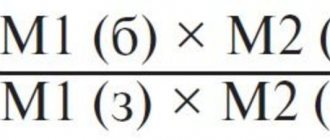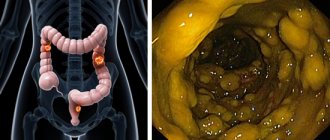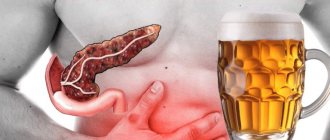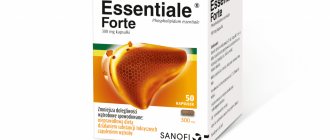The drug effectively and quickly restores well-being without causing acute adverse reactions from the body. It is recommended to buy it for emergency treatment of food poisoning, as well as for treating the consequences of alcohol intoxication.
Neosmectin is produced in the form of a dry mixture for the preparation of medicinal suspensions. Intended for internal use. The active substance of the drug is dioctahedral smectite, which is a soft enterosorbent. For sale in pharmacy chains, the product is packaged in portioned blue and white sachets of 4 g.
- The material of the sachet is waterproof, made of a composite plastic, the bags are tightly sealed. Information about the composition and purpose of the drug is applied to the surface.
- Inside the sachets there is a light gray, yellowish or cream colored powder. The mass has a characteristic vanilla, berry or fruit aroma and dissolves in liquids. The weight of the active substance is 3 g per serving.
- Auxiliary components of the drug: glucose, flavorings, sweeteners.
- The finished solution is a heterogeneous, opaque substance from white to light brown in color, with a sweetish taste.
- Recycled cardboard packages contain 3–30 portioned sachets.
Neosmectin is intended to eliminate the unpleasant symptoms of bloating, heartburn and other signs of indigestion.
Pharmacodynamics and pharmacokinetics
This drug is a product with a selective adsorbing effect. The presence of a discoid-crystalline structure allows various microorganisms to be selectively adsorbed on its own surface. The polyvalent bond between dioctahedral smectite and glycoprotein molecules of wall mucus significantly increases its quantity. At the same time, the mucous barrier in the gastrointestinal tract is stabilized, increasing its gastroprotective qualities. Neosmectin has no particular effect on intestinal motility. This remedy can be used during pregnancy .
Mechanism of action
The medication has antidiarrheal and adsorbent properties: it neutralizes toxins in the intestinal cavity and eliminates excess gas formation. Dioctahedral smectite molecules attract pathogenic microbial cells to their surface, binding and drawing out various toxic compounds. Neosmectin helps improve the quality and increase the density of wall mucus. The gastroprotective property helps to avoid the development of irritation of the stomach cavity, small and large intestines.
Intestinal motility remains stable during the use of the drug, so constipation does not occur as a result of using Neosmectin. If it is necessary to eliminate this disorder of intestinal function, other drugs must be used. Neosmectin does not have the ability to provoke systemic effects; it acts only in the intestinal space. In unchanged form, the drug substances are excreted from the intestines with feces.
Indications for use of Neosmectin
Main indications for use of Neosmectin:
- allergic diarrhea;
- drug-induced diarrhea;
- nutritional diarrhea due to nutritional disorders;
- diarrhea due to infectious diseases;
- heartburn;
- flatulence;
- epigastric discomfort.
Neosmectin, instructions for use (Method and dosage)
This powder is intended for internal use in diluted form. According to the instructions for use of Neosmectin, before use, you need to prepare a suspension from the powder. In this case, the contents of the package are poured into a container with 50-100 ml of liquid, and then stirred thoroughly. The daily dosage of this drug depends on the age of the patient. Adults are prescribed 3 sachets. For newborns and children up to one year old - 1 sachet, for babies 1-2 years old - 2 sachets, for children 2-12 years old it is recommended to take 2-3 sachets. As a rule, the daily dosage is divided into 3-4 doses.
How to use Neosmectin: instructions
The drug is approved for use from the first days of life. If necessary, it can be used by women during pregnancy and lactation. Before use, Neosmectin powder must be diluted in liquid:
- Mix the contents of the sachet or part of it with warm water: about 50–100 ml, shake the suspension thoroughly until the powder dissolves;
- for newborns and infants, you can prepare a solution in a bottle; it is not forbidden to mix it with an adapted diet, breast milk, or add it to cereals;
- the finished solution remains suitable for consumption for 16 hours, then it must be disposed of.
When preparing the drug, it is important to use clean containers. It is not advisable to mix Neosmectin with sour, hot, spicy foods. It is recommended to give 1 sachet per day to children under 1 year of age, for older children up to 6 years of age, you can increase the dosage to 2 sachets. Adolescents and adults are allowed to use up to 3 sachets of the drug per day. It is advisable to consume the solution in equal portions at regular intervals after meals. Course of admission: 1–3 days. If signs of dyspepsia persist after treatment, you should change therapy in consultation with your doctor.
Neosmectin affects the rate of absorption and potency of various medications. It must be taken separately from other drugs: keep a break of about 1.5–2 hours.
Neosmectin for newborns
When preparing the suspension, infants need to dissolve the powder in a bottle in 50 ml of warm water. It is recommended to distribute the finished suspension into several doses. Instructions for newborns advise storing unused suspension in the refrigerator. It is also possible to mix the suspension with semi-liquid food, for example, puree, porridge, or formula for feeding. The diluted suspension can be used for no more than 16 hours. If necessary, take part of the powder from the bag with a clean spoon and prepare a solution. The rest can be used in the next dose of the drug.
Analogs
Level 4 ATC code matches: Polyvinylpyrrolidone
Polysorb
Polyphepan
Smecta
Enterosgel
Atoxyl
Filtrum-STI
Lactofiltrum
Enterodesis
The main analogues are: Diosmectite, Benta, Diosorb, Smecta and Dioctahedral Smectite.
Also have a similar effect: Enterofuril, Nifuroxazide, Loperamide and others.
Which is better: Smecta or Neosmectin?
This question is often asked on specialized forums. At the same time, experts say that there are no special differences between these drugs, other than price and country of manufacture.
The base of each of these medicines is dioctahedral smectite or diosmectite . Therefore, Smecta and Neosmectin are equally effective.
Reviews of Neosmectin
Discussions regarding the use and effectiveness of this remedy can be found on various forums dedicated to children and motherhood. Mothers often ask each other what Neosmectin helps best with and how to give it correctly. Sometimes babies don't like this medicine, so they act up and spit it out. Other mothers say that they add powder to porridge or milk mixtures, from which Neosmectin acquires the taste and consistency of these products and is easily consumed by children.
This drug is also actively used by women during pregnancy . They note its high efficiency, lack of toxicity and convenient dosing.
In addition, users often compare this drug with other drugs of similar action. Many people note that, for example, Smecta and Neosmectin are equally effective. They are excellent in treating diarrhea caused by poisoning and irritation of the intestinal mucosa. When this sorbent is taken correctly, it does not have any undesirable effects on human health.
Aspects of clinical use of enterosorbent Neosmectin
Maev I.V., Samsonov A.A., Golubev N.N.
Despite a fairly detailed study of the use of enterosorbents in medical practice, the use of drugs from this group continues to remain one of the pressing topics of clinical research in modern gastroenterology.
Such a high and stable interest is due to the presence of a wide range of direct and indirect therapeutic and prophylactic effects in these drugs, which are achieved due to the physicochemical properties of the sorbent substance, capable of binding and removing toxic products (sorbates) from the body.
Sorption capacity (sorbent power) is determined by the ability of the drug to absorb, firmly retain and remove substances. The sorption capacity of sorbents is due to the presence of a porous structure with an active surface. Depending on the size of the radii, pores are divided into three types: micropores with a radius of less than 1.5 nm, mesopores with a radius from 1.5 to 200 nm, and macropores with a radius of over 200 nm. The listed types of pores differ in the mechanism of the processes occurring in them. Small molecules are sorbed mainly in micropores, and meso- and macropores are transport channels for them. For molecules of medium and high molecular weight, micropores are practically inaccessible, and they are sorbed in mesopores. Macropores are designed for the sorption of supramolecular structures and cells.
Thus, the choice of a sorbent with a particular porous structure allows one to influence the selectivity of sorption, thereby predetermining its therapeutic effect. The use of sorbents with a predominance in the structure of micropores leads to the sorption and removal from the body of not only toxic compounds, but also important nutrients (vitamins, essential minerals, etc.),
The following main types of enterosorbents are used in clinical practice:
- Carbon adsorbents based on activated carbon (carbolene, carboctin, gastrosorb), granulated carbons (brands SKN, SKT-6A, SUGS, SCAN, etc.) and carbon fiber materials (vaulene, actilene, Dnepr).
- Enterosorbents based on lignin (polyphepan, lignosorb, filtrum, lactofiltrum).
- Derivatives of polyvinylpyrrolidone (enterodes, enterosorb).
- Polymethylsiloxane polymer (enterosgel).
- Dioctahedral smectite (neosmectin, smectite).
- Natural dietary fiber: cereal bran, cellulose, alginates (detoxal), pectins (polysorbovit - 50, polysorbovit - 95).
- Others: aluminum hydroxide, almagel, hastal, sucralfate, silica gels.
Currently, enterosorbents that have not only a sorption, but also a pronounced mucocytoprotective effect are becoming increasingly relevant, which, in particular, include preparations based on dioctahedral smectite, obtained from white natural smectite clay with an improved chemical composition. The mucocytoprotective effect of dioctahedral smectite is due to its ability to protect the mucous membrane of the gastrointestinal tract, forming polyvalent bonds with mucus glycoproteins, binding to damaged areas, restoring the integrity of the epithelial mucous layer, increasing its mass, viscosity and protective properties.
The successful combination of several pharmacological properties of dioctahedral smectite allows us to reconsider the traditional view of the place of sorbents in the treatment of a number of diseases of the digestive system and expand the indications for their use.
Particular attention is drawn to a new domestic drug based on dioctahedral smectite - Neosmectin. A feature of the chemical composition of the drug Neosmectin is the optimal content of silicon, potassium and magnesium oxide, which determines better adsorption of organic substances, increased volumetric capacity for anions of inorganic acids and more effective neutralization of hydrochloric acid.
In general, Neosmectin is characterized by a high sorption effect in relation to hydrogen ions, pepsin, bile acids, intestinal gases, viruses, bacteria and their toxins (Fig. 1). It should also be noted that Neosmectin, compared to foreign-made smectite, contains a larger amount of magnesium and a smaller amount of iron, which probably reduces the risk of constipation syndrome, especially with long-term use.
In order to study the sorption properties of Neosmectin at the analytical center of the Faculty of Chemistry of Moscow State University. M.V. Lomonosov, a quantitative chemical analysis was carried out using X-ray powder diffraction. The objective of this study was to study the most significant sorption indicators of dioctahedral smectite for clinical practice in comparison with similar indicators of activated carbon, as the most widely used enterosorbent.
As evidenced by the results of this work, the structural composition of preparations based on dioctahedral smectite has a number of advantages compared to activated carbon due to the predominance of pores of medium and large diameter. This feature gives them high sorption activity when interacting with agents having medium and high molecular weight: foreign proteins, viruses and bacteria. The predominance of small-diameter pores in the structure of activated carbon leads to the removal of important nutrients from the body, which is certainly undesirable, especially with a fairly long course of treatment.
Thus, Neosmectin belongs to the promising drugs of the group of enterosorbents, which makes it possible to use it for a wide range of diseases of the gastrointestinal tract.
It seems justified to include the drug in treatment regimens for acid-related diseases, and, in particular, gastroesophageal reflux disease associated with duodenogastroesophageal reflux, gastric and duodenal ulcers, as well as chronic pancreatitis. Completed clinical studies performed at the bases of the Moscow State Medical and Dental University, the Central Clinic of the National Medical and Surgical Center named after. Pirogov, St. Petersburg Military Medical Academy, demonstrate the positive effect of Neosmectin on objective criteria of the clinical status of patients with acid-dependent pathology of the digestive system, including gastroesophageal reflux disease, gastric and duodenal ulcers, and chronic pancreatitis.
Thus, taking Nesmectin by patients with gastroesophageal reflux disease was accompanied not only by relief of dyspeptic symptoms, but also by normalization of the endoscopic picture of the esophagus and stomach.
The administration of Neosmectin as part of the eradication therapy of gastric and duodenal ulcers associated with H. Pylori led to the eradication of the pathogen in 90% of patients, while in this group dysbacteriosis was observed significantly less often, which is probably due to the ability of Neosmectin to effectively sorb and remove from the body large molecular carbohydrates and bile acids, the breakdown and dehydroxylation of which is often disrupted due to nonspecific changes in the intestinal microflora while taking antibacterial drugs.
When Neosmectin was prescribed as part of complex therapy to patients suffering from chronic erosive gastroduodenitis, there was a clinically more significant decrease in the severity of abdominal pain syndrome, while simultaneously reducing erosive and dysplastic changes in the antral mucosa of the stomach.
It is important to note that in this category of patients the positive effect of the drug may be associated with its combined mechanism of action. Neosmectin binds and removes substances that are part of gastric and duodenal refluxates (hydrochloric acid, pepsin, bile acids, lysolecithin and other components of duodenal contents), which have a pronounced cytotoxic effect on the epithelium of the esophagus, stomach and duodenum. The mucocytoprotective effect of dioctahedral smectite, which increases the resistance of the mucous membrane of the upper gastrointestinal tract to the effects of pepsin, hydrochloric acid and bile acids, may also be important (especially in the presence of erosions and ulcers).
It should be noted the positive clinical effect of taking Neosmectin in patients with chronic pancreatitis, as evidenced by the improvement in the structural and functional state of the pancreaticobiliary system during dynamic ultrasound examination of patients. Along with the improvement in instrumental examination data of the pancreas and biliary system, with a course of Neosmectin, there was a tendency towards normalization of lipid metabolism parameters.
Data on the positive effect of using Neosmectin in patients suffering from irritable bowel syndrome are based on the results of studies conducted at the Central Clinic of the National Medical and Surgical Center. Pirogov, Central Research Institute of Gastroenterology, St. Petersburg Military Medical Academy. While monitoring the effectiveness of Neosmectin therapy in patients with irritable bowel syndrome accompanied by diarrhea, positive dynamics of indicators reflecting intestinal motor function were revealed, which is likely due not only to the direct sorption effect of the drug, but also to the enveloping and mucoprotective properties of dioctahedral smectite.
Thus, Neosmectin, which has a combined sorption and mucocytoprotective effect, is one of the promising modern enterosorbents with proven effectiveness in a number of diseases of the gastrointestinal tract, accompanied by a violation of the integrity of the mucous barrier, symptoms of gastric and intestinal dyspepsia, exo- and endotoxicosis, intestinal dysbiosis, as well as disorders of digestive function.
Literature 1. Belyakov N.A. Enterosorption. Leningrad. Center for sorption technologies. 1991. 325 p. 2. Bondarenko V.M., Matsulevich T.V. Intestinal dysbiosis as a clinical and laboratory syndrome: current state of the problem. Guide for doctors. M.: GEOTAR-Media, 2007. - 304 p. 3. Ivashkin V.T., A.A. Sheptulin. Diarrhea syndrome. - M.: GEOTAR MEDICINE, 2000. - P. 135. 4. Krivova N.A., Selivanova T.I. Lapteva T.A., et al. Structural and functional organization of the protective mucous barrier of the digestive tract. // Ross. magazine gastroenterol., hepatol., coloproctol. - 1996. - No. 3. - P. 21 - 24. 5. Maev I.V. Cheremushkin V.S. Irritable bowel syndrome: a textbook. // M.: GOUVUNMTs Ministry of Health of the Russian Federation, 2004. - P. 72. 6. Maev I.V., Samsonov A.A., Golubev N.N. Antibiotic-associated diarrhea. // Consilium medicum, application Gastroenterology. - 2007. - No. 1. - P. 45 - 49. 7. Uchaikin V. F. Enterosorption is an effective method of etiopathogenetic therapy of acute intestinal infections / V. F. Uchaikin, A. A. Novokshonov, N. V. Sokolova // Det. . infections. 2005. - No. 3. P. 39-43. 8. Frolkis A.V. Enterosorbent polyphepan in the treatment of diseases of the digestive system // Therapist. Archive. - 1997. - No. 2. - P. 76-80. 9. Khotimchenko Yu.S., Kropotov A.V. The use of enterosorbents in medicine // Pacific Medical Journal. - 1999. - No. 2. — P. 84-89. 10. Shcherbakov P.L., Petukhov V.A. Comparative effectiveness of enterosorbents for diarrhea in children // Issues of modern pediatrics. - 2005. - No. 4. - P. 85-89.








